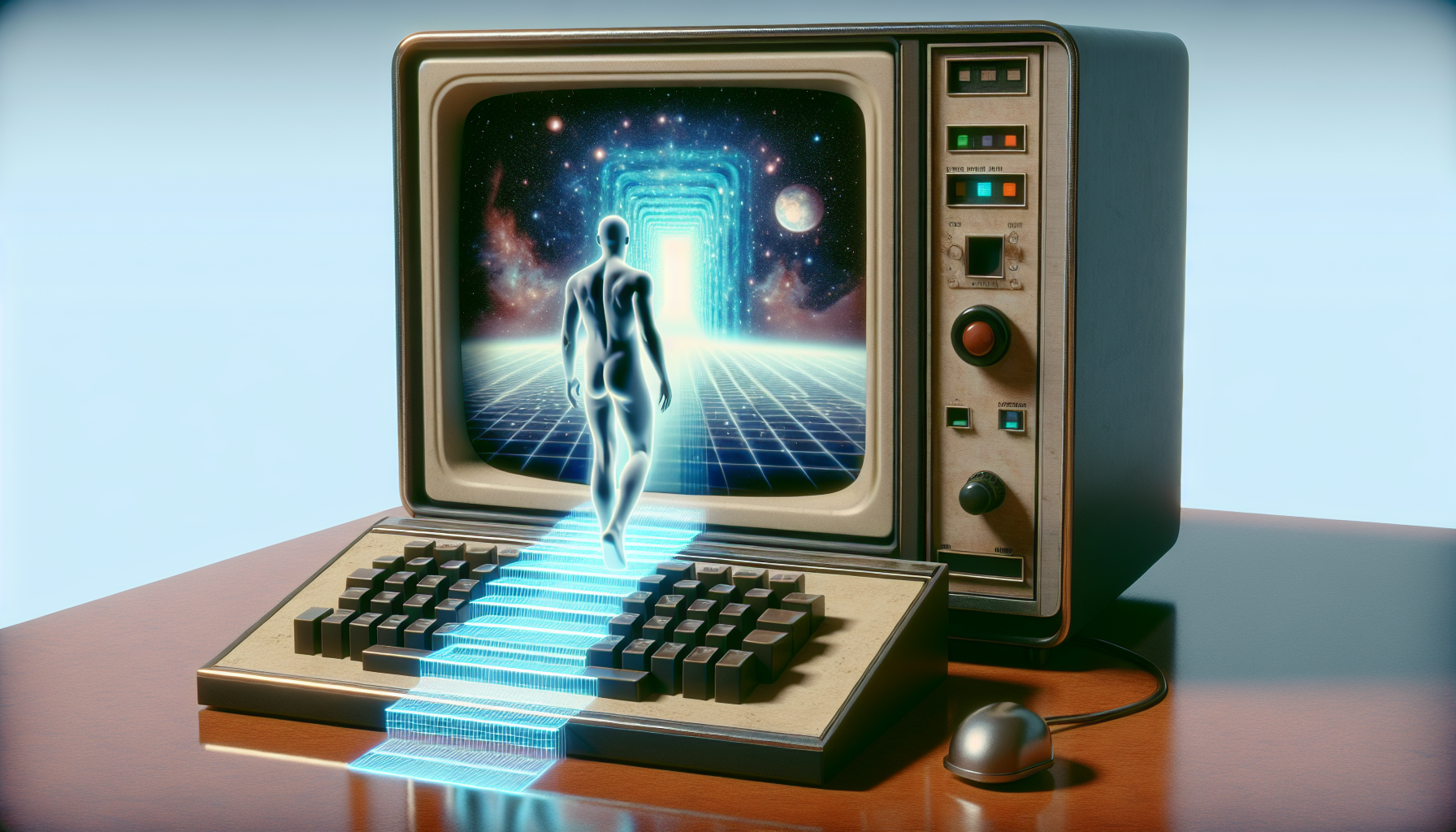Imagine a future where, instead of fading away, our minds could live forever inside a computer. Maybe your great-great-great-grandchildren will wave to “you” across a digital landscape, or perhaps you’ll send an email from the afterlife with a snappy “Wish you were here!” sign-off. The dream of uploading minds—the great promise (or threat) of digital immortality—has fascinated humans for decades. Science fiction serves up endless tales of consciousness preserved, copied, or transformed. But as the technology inches closer to possibility, we must ask ourselves: Is this truly eternal life, or just a clever way of making a copy that is no longer you?
The Allure of Digital Eternity
For much of human history, death has been our greatest mystery and most steadfast limit. Religion, poetry, and philosophy have all wrestled with what comes after. Now, the promise of digital immortality suggests we might cheat the Reaper with circuits and code. The idea is simple: map the intricacies of your brain, upload its patterns into a supercomputer or artificial neural net, and then let “you” keep on thinking, learning, and tweeting—long after your body has met its expiration date.
The appeal is obvious. Who wouldn’t want more time? Who wouldn’t want to see the centuries unfold, explore virtual worlds, or avoid awkward family reunions (“Sorry, still rebooting!”)? If our consciousness can truly be digitized, perhaps death itself becomes just a technical glitch.
What Does It Mean to “Upload” a Mind?
Let’s get down to nuts and bolts—or, more accurately, to neurons and bits. Uploading a mind isn’t just a matter of copying your favorite Spotify playlist. The human brain contains about 86 billion neurons, each connected to thousands of others, creating mind-boggling complexity. To “upload” your mind, a machine would need to map the entire structure: every memory, every habit, every emotional quirk. Some propose scanning the brain at an atomic level. Others imagine gradually replacing bits of your brain with digital counterparts over time—the philosophical equivalent of swapping each board on a ship until none of the original wood remains, yet the ship still sails. (See: Ship of Theseus, with Wi-Fi.)
But even if we succeed in creating a digital version that talks, jokes, and reminisces like you, is it really you? Is there some essential “spark” that is lost in translation—something that isn’t just data but experience, subjectivity, the elusive “I”?
Self, Soul, and the Copy Problem
This brings us to an ancient riddle in a futuristic disguise. When it comes to mind uploading, we run headlong into some old philosophical puzzles about identity. What makes you, you? Is it your memories? Your personality? Something ineffable and uncopyable?
If a digital version of you wakes up inside a computer and says, “Here I am!,” most of us might just reply, “Are you sure?” After all, if your original biological brain is destroyed in the process, the upload better hope it didn’t forget to save your favorite sandwich recipe. But even more problematically, if the original brain remains, are there now two “yous”? When your digital self starts posting on social media, will you both argue over who really gets to like pictures of cats?
This “copy problem” is thorny. We’re used to thinking of identity as unique and continuous. But mind uploading turns identity into a kind of backup file. You could restore from a previous save—or, with enough cloud storage, create countless versions. Do any truly capture your soul, or have you simply become the punchline to a cosmic joke about photocopiers?
The Potential Rewards (and Risks)
Digital immortality isn’t all existential dread and wayward clones. Think about the possibilities: ancient philosophers and scientists could converse with future generations. Lovers separated by centuries could send one another digital sonnets. We could learn from historical minds, or simply keep our loved ones “close” forever.
But there are risks—as always, the fine print in any supposed miracle. First, there are the practical problems: Will your upload be conscious or just a convincing simulation? Who owns your digital self? (Let’s hope your afterlife doesn’t come with targeted ads.) And what happens if someone hacks you, deletes you, or sets your server to “sleep” mode for a thousand years?
There’s also the deeply personal risk of losing what makes us human. Life in a body, with its aches and joys, isn’t always easy—but it’s real. Would the digital life be enough? Would we lose something irreplaceable when our dreams, fears, and laughter are reduced to 0s and 1s?
Are We Our Memories, or Something More?
Some argue that if all your memories, patterns, and behaviors are transferred, the result is you—just running on new hardware. After all, your body changes all the time; none of the cells you had as a child remain today, yet you don’t greet yourself as a stranger each morning.
But others reply: There’s a difference between a pattern and a presence. Copying the Mona Lisa doesn’t produce another masterpiece, only a replica. No matter how convincing, something is missing—the hand of the original creator, the history, the uniqueness. Is the digital “you” really experiencing, or just replaying an imitation of life?
A Life Worth Living?
Ultimately, the question of digital immortality may say as much about our hopes and fears as it does about technology. We long to persist, to matter, to see (and be seen) beyond our brief moment on this stage. Whether uploading our minds will grant us eternal life or a clever facsimile is still an open question. Maybe the answer, as with so much in philosophy, is “yes, no, and it depends.”
Either way, the desire for digital immortality challenges us to think deeper about what we value in life, identity, and the adventure of being human. As for me, I’ll keep my options open—and my passwords strong—just in case my next upgrade includes an eternity plan.

Leave a Reply